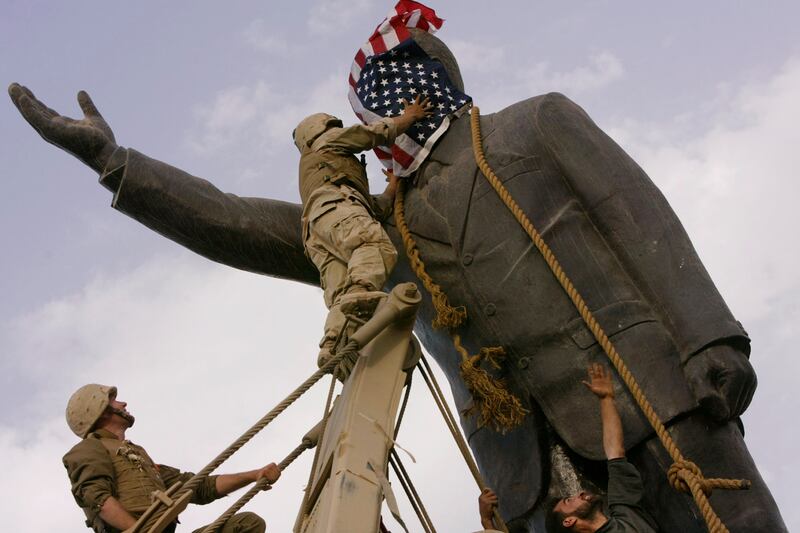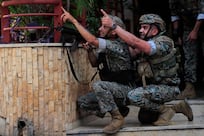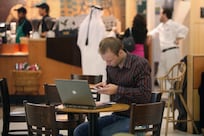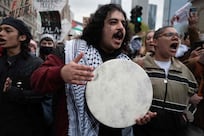After several failed attempts, a US Hercules tank retriever fitted with a crane drove on to the traffic island in Baghdad’s Firdos Square and brought the black bronze statue of Saddam Hussein tumbling to the ground.
That was the iconic moment on April 9, 2003 that heralded the start of the US occupation of Iraq, an eight-year period defined by unchecked bloodshed, destructive chaos, a deeply flawed political system and the rise of a deadly sectarian conflict.
Shown live to a mesmerised global audience, the fall of the black statue played out before a crowd of several hundred Iraqis who braved the streets on that momentous day and a group of US Marines awash with a sense of fulfilment.
Once sprawling on the ground, Iraqis spat on the statue and kicked it. One man tried to dismember it with a sledgehammer.
But amid that euphoria, some Iraqis, conspicuous by their lack of participation, stood by and silently watched, occasionally shaking their heads in disapproval.
Looking back, those who remained quiet may have possessed the farsightedness to see what was in store for Baghdad and the country at large. It must have been horrifying for them.
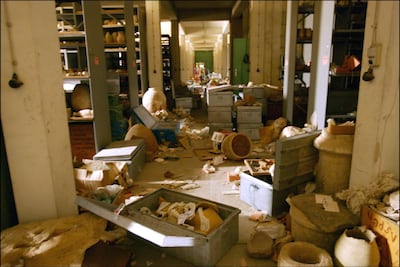
The US occupation of Iraq has proven to be a treasure trove for scholars and think-tank experts, offering a rich case study in regime change, counterterrorism, Islamist militancy and the dynamics of civil wars.
For me, my years in Iraq offered countless experiences that laid bare the carnage that ripped the country apart for years. These ranged from the bereavement of civilians visited by the war and the near-total disregard for Iraqi lives, to the lengths to which politicians would go to protect their position of privilege and their ill-gotten financial gains.
Those who were familiar with Baghdad before the US-led invasion must have felt the pain of watching the city degenerate into a place engulfed by wanton violence and mindless destruction. To them, Baghdad, even under the harsh UN sanctions imposed after Iraq’s 1990 invasion of Kuwait, was uniquely beautiful.
What the city had to offer then was never glamorous or chic, but it was certainly authentic. There was the Al Motanabi book market, the nearby Shahbandar tea house, the shrine of Imam Kazim and that of Imam Haneifa across the Tigris and, of course, the mouth-watering kebab eateries and tea stands.
The city’s art galleries offered postmodern paintings by Iraqi artists who for years had to sell their work for less than their value so that they could feed their families during the sanctions. The artists with connections, and there were not many of those, smuggled their work out to be sold in Beirut, Amman and the Gulf states for the right price.
Baghdad’s residents, or the Baghdadis, distinguished themselves with their generosity even when they struggled to make ends meet. Many of them were avid readers who appreciated the arts, including western forms like ballet or opera.
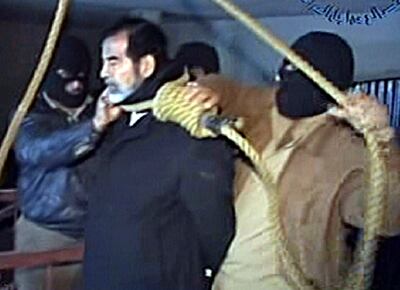
The new Baghdad, ugly and perilous, drove away those who made the city the sophisticated place it once was. Members of the intelligentsia, highly qualified professionals and members of the upper class packed and went to Amman, Beirut and London.
In their place emerged a new class of entrepreneurs who saw a chance to get rich quickly in occupied Baghdad, selling the Americans anything from bottled water to blast walls, and winning contracts to give a fresh coat of paint to schools and government buildings.
In the same vein, taxi drivers, shopkeepers and schoolteachers from the Iraqi diaspora in places as far afield as Detroit, Malmo and Sydney returned to occupied Iraq and used connections to land jobs way beyond their abilities or qualifications, including as provincial governors.
But the woes of the city’s demographics under US occupation paled in comparison to what was to become of it in the days, weeks and months after the statue’s fall.
The day after its fall, looters swarmed the capital, making away with anything and everything under the very nose of American troops deployed across Baghdad. They used cars, buses, pickup trucks, bed sheets, rugs and wheelbarrows to haul their loot to their homes.
Even the National Museum, home to priceless artefacts, was not spared, with looters – some armed – taking home priceless pieces. Saddam’s opulent palaces and the luxury villas of top regime officials were also looted, with teams of skilled workers painstakingly removing tiles, marble floors, electric fittings, sinks and bathtubs.
In those early days, nightfall brought trepidation and an unsettling uncertainty. Baghdad’s chronic power cuts plunged the city into darkness, giving it a feel of foreboding that endured for years.
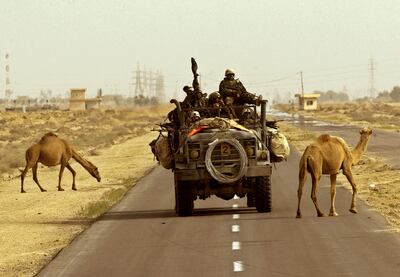
Gunfire and blasts rocked Baghdad but no one knew exactly what was happening. Many streets were barricaded by edgy residents trying to keep the looters at bay. Carjacking and burglaries were common. Many attempted to blow up bank vaults to get their hands on the cash inside.
But that was not the worst to befall the city with a history steeped in medieval glory and pomp.
Attacks on US troops and Iraqis suspected of collaborating with the Americans did not take long to start. Initially, they were mostly individual acts by indignant Iraqis who had served in their country’s vanquished army or were members of Saddam’s Baath party.
That soon morphed into a well-organised insurgency that added to its list of targets members of Iraq’s then-nascent security forces and the US-backed political elite.
The attacks were blamed on Sunni and Shiite militants who found in the Americans a common enemy. But they soon turned against each other to introduce Baghdad to what is perhaps its darkest chapter since the ruinous Mongol invasion of the 13th century.
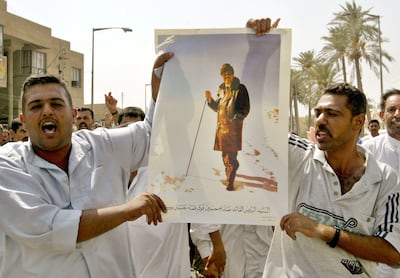
The shift in the balance of power caused by the toppling of Saddam’s regime left the country’s Shiite majority as the dominant community and weakened the Sunni Arab minority. The new order did not sit well with the Sunnis and their reduced place on the pecking order fuelled the insurgency.
The years 2006 and 2007 may have been the worst of the days of sectarian bloodletting. Male members of both communities were kidnapped by the dozen every day. Their bodies, invariably bearing signs of torture, showed up the next day at a rubbish dump or washed up on the banks of the Tigris south of Baghdad. There were so many suicide bombings, they almost ceased to make anyone, except family and loved ones, pause and reflect on those who departed this world in pieces. There were also rocket attacks and execution-style killings. Mosques were bombed and fake checkpoints were set up to capture members of the rival community to feed the sectarian killing machine that was in full throttle at the time.
The violence of those days has forever changed the city’s landscape, replacing its storied communal harmony that had for long distinguished it. Single-sect neighbourhoods replaced those that had for decades been mixed. Inter-sect marriages significantly declined and many of those that date back before 2003 showed signs of strain under societal or family pressure.
Baghdad to this day bears the scars of those days of hatred and intolerance. The men who slaughtered and maimed have escaped justice and remain free. Some of them gained a level of false respectability, entering politics, serving in senior government positions or taking up business.
They remain killers at heart who will not hesitate to take life again.
Hamza Hendawi is The National's senior correspondent in Cairo. He is the author of two books on Iraq; Excuse Me, When Will it be Morning? – a journal chronicling the war in Iraq in 2007-2008 – and Apocalypse Company, the story of a US infantry unit based in north Baghdad in 2008. His first novel, The Wife of the Emir of Fallujah, came out last year
